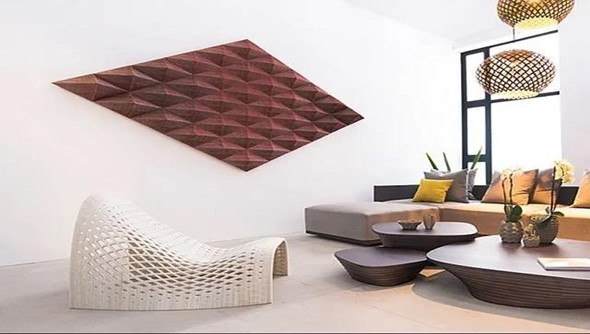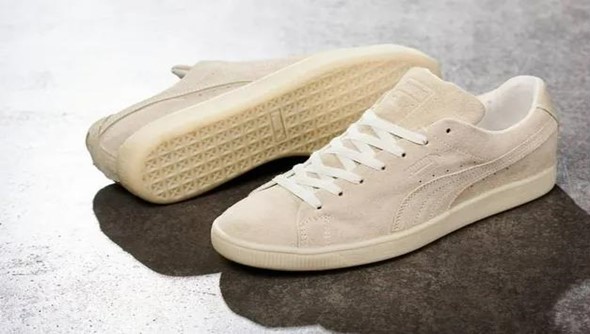-
 A polylactic acid 3D printed chair that subverts your imagination.12 08,2022
A polylactic acid 3D printed chair that subverts your imagination.12 08,2022In recent years, 3D printing technology can be seen in various industrial fields, such as clothing, automobiles, construction, food, etc., can all use 3D printing technology. In fact, 3D printing technology was applied to incremental production in the early days, because its rapid prototyping method can reduce time, manpower and raw material consumption. However, as the technology matures, the function of 3D printing is not only incremental. The wide application of 3D printing technology extends to the furniture that is closest to your daily life. 3D printing technology has changed the manufacturing process of furniture. Traditionally, making furniture requires a lot of time, money and manpower. After the product prototype is produced, it needs to be continuously tested and improved. However, 3D printing technology simplifies this process. Prototyping products quickly allows designers to more efficiently test and optimize products thoroughly. Furniture made of 3D printing technology, under its attractive appearance, has multi-faceted practicality that cannot be ignored. Whether it's chairs, lounge chairs, tables, or cabinets, there are creative and unique creations all over the world. Based in Guatemala, Central America, the Piegatto furniture design studio designed chairs and lounge chairs made of polylactic acid (PLA), with beautiful, simple lines and intricate textures. With the help of 3D printing technology, designers can boldly give life to their unconstrained imagination, materialize their creativity, turn imagination into reality, and create unique design works. It can also create an unforgettable sense of lightness for furniture works with exquisite and soft lines, and flexibly use various materials to create a furniture production road that combines technology.
-
 Biodegradable glitter could revolutionize the cosmetics industry .11 22,2022
Biodegradable glitter could revolutionize the cosmetics industry .11 22,2022Life is full of shiny packaging, cosmetic bottles, fruit bowls and more, but many of them are made of toxic and unsustainable materials that contribute to plastic pollution. Recently, researchers at the University of Cambridge in the UK have found a way to create sustainable, non-toxic and biodegradable glitter from cellulose, the main building block of the cell walls of plants, fruits and vegetables. Related papers were published in the journal Nature Materials on the 11th. Made from cellulose nanocrystals, this glitter uses structural color to alter light to produce vibrant colors. In nature, for example, the flashes of butterfly wings and peacock feathers are masterpieces of structural color, which will not fade after a century. Using self-assembly techniques, cellulose can produce brightly colored films, the researchers say. By optimizing the cellulose solution and coating parameters, the research team was able to fully control the self-assembly process, allowing the material to be mass-produced in rolls. Their process is compatible with existing industrial-scale machines. Using commercially available cellulosic materials, it takes only a few steps to convert to a suspension containing this glitter. After producing the cellulose films on a large scale, the researchers ground them into particles the size of which are used to make glitter or effect pigments. The pellets are biodegradable, plastic-free, and non-toxic. Furthermore, the process is much less energy-intensive than conventional methods. Their material could be used to replace plastic glitter particles and tiny mineral pigments widely used in cosmetics. Traditional pigments, such as the glitter powders used in everyday use, are unsustainable materials and pollute the soil and oceans. Generally, pigment minerals must be heated at a high temperature of 800°C to form pigment particles, which is also not conducive to the natural environment. The cellulose nanocrystal film prepared by the team can be manufactured on a large scale using a "roll-to-roll" process, just like paper is made from wood pulp, making this material industrial for the first time. In Europe, the cosmetics industry uses about 5,500 tons of microplastics every year. Senior author of the paper, Professor Silvia Vignolini, from the Yusuf Hamid Department of Chemistry at the University of Cambridge, said they believed the product could revolutionize the cosmetics industry.
-
 Puma begins testing biodegradable sneakers.11 14,2022
Puma begins testing biodegradable sneakers.11 14,2022Sportswear giant Puma has begun experimenting with sustainable production methods centered on its signature suede sneakers. Renamed Re:Suede, the experimental version of the shoe features a number of new technology approaches in its design, including Zeology tanned suede, biodegradable thermoplastic elastomer (TPE) and hemp fibers. The trial sneaker is part of the brand's goal to meet the growing demand for sustainable products and further address the need for waste management in the footwear industry. To be launched in January 2022, the experimental shoe will be launched by 500 participants based on trials and tests in Germany, each recipient will be required to wear Re:suede for six months, to test the durability of the product before the style is brought back Proceed to the next experiment. Part of the process will see the design work with Ortessa Groep through an industrial biodegradation process. Waste experts in the Netherlands will help determine whether grade A compost in shoes can be managed in an agricultural setting. The results will be used to determine Puma's future sustainable shoe consumption. The experiment was carried out under the label's newly developed 'Circular Lab' project, which aims to develop innovative circular initiatives. Puma has experimented with sustainable shoes before, launching a biodegradable sneaker in 2012 as part of its InCycle line. Low demand and the need for further research led to the discontinuation of the shoe, as the brand highlighted the technical constraints it faced at the time. For the new trial, the athletic company said it will share final results and insights gained from the project to benefit and empower others in the footwear industry.
-
 Application Research of Concentrating Light (PLA) in LED Lighting System.11 09,2022
Application Research of Concentrating Light (PLA) in LED Lighting System.11 09,2022Scientists from Germany and the Netherlands are researching new environmentally friendly PLA materials. The aim is to develop sustainable materials for optical applications such as automotive headlights, lenses, reflective plastics or light guides. For now, these products are generally made of polycarbonate or PMMA. Scientists want to find a bio-based plastic to make car headlights. It turns out that polylactic acid is a suitable candidate material. Through this method, scientists have solved several problems faced by traditional plastics: first, turning their attention to renewable resources can effectively alleviate the pressure caused by crude oil on the plastics industry; second, it can reduce carbon dioxide emissions; third, this Involves consideration of the entire material life cycle. "Not only does polylactic acid have advantages in terms of sustainability, it also has very good optical properties and can be used in the visible spectrum of electromagnetic waves," says Dr. Klaus Huber, a professor at the University of Paderborn in Germany. At present, one of the difficulties that scientists are overcoming is the application of polylactic acid in LED-related fields. LED is known as an efficient and environmentally friendly light source. "In particular, the extremely long service life and visible radiation, such as the blue light of LED lamps, place high demands on the optical materials," explains Huber. This is why extremely durable materials must be used. The problem is: PLA becomes soft at around 60 degrees. However, LED lights can reach temperatures as high as 80 degrees while operating. Another challenging difficulty is the crystallization of polylactic acid. Polylactic acid forms crystallites at around 60 degrees, which blur the material. The scientists wanted to find a way to avoid this crystallization; or to make the crystallization process more controllable -- so that the size of the crystallites that formed would not affect the light. In the Paderborn laboratory, the scientists first determined the molecular properties of polylactic acid in order to alter the material's properties, in particular its melting state and crystallization. Huber is responsible for investigating the extent to which additives, or radiation energy, can improve the properties of materials. "We built a small-angle light scattering system specifically for this to study crystal formation or melting processes, processes that have a significant impact on optical function," said Huber. In addition to scientific and technical knowledge, the project could deliver significant economic benefits after implementation. The team expects to hand over its first answer sheet by the end of 2022.




